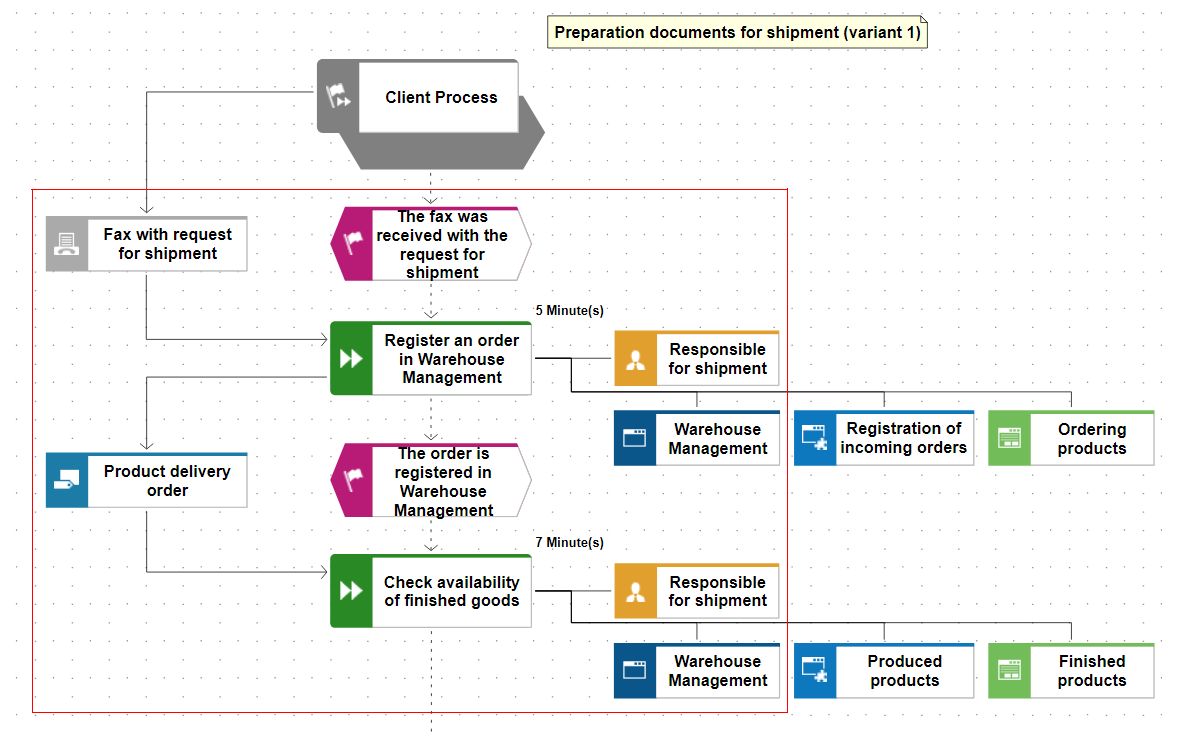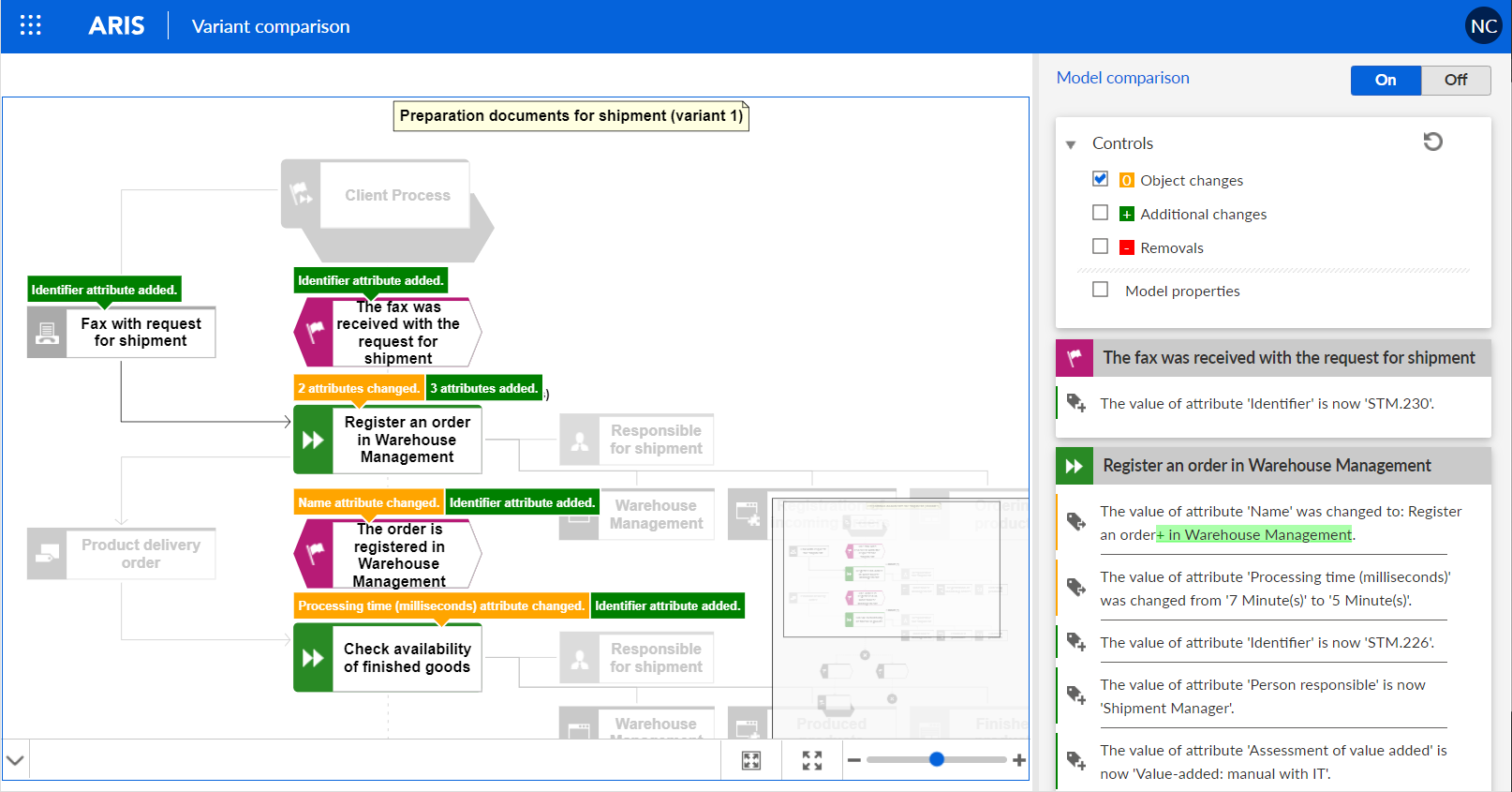Managing variants in ARIS Connect
It is time-consuming to create temporary duplicates of models in the system. In addition, due to the logical connections between models, such duplicates can confuse users and fill the database with records that will not be used in the future.
To solve this problem, ARIS has a mechanism for creating and managing variants. Originally, this mechanism was only available for the ARIS Architect application. Now, the latest versions of ARIS Connect also have the functionality to create and manage variants. A variant can be created as a copy of the original master model, or any model from the database can be assigned as a variant for the current model.
During creating a model variant in ARIS Connect, variants for model objects are also created. This helps to get a different entity from the original one in the database. The variants will have all the characteristics of the master objects, but changes in the variants will not affect the objects in the original model.
For example, there is a necessity to compare two processes in terms of performance. The master model shows that the process is performed without implemented information system (Fig. 1). The variant model has an information system “Warehouse Management” that automates a number of functions of the variant process (Fig. 2).
To determine the execution time of a process, it is necessary to know the execution time of each function. In the master model the function time attributes are filled with values without taking automation into account. Accordingly, in the variant model the function time attributes take into account automation. Thus, due to the variant creation mechanism, the user can see two visually identical business entities that differ only in one attribute – execution time. For the ARIS system, these are different entities – the master object and the variant object, which allow the user to correctly conduct analytical checks and get documentation of the approved process model.

Figure 1. A fragment of a process model without an information system (master model)

Figure 2. A fragment of a process model with an implemented information system (variant model)
In addition to creating variants, ARIS Connect has the functionality to compare the master and variant models. The system suggests selecting one or more of three groups of changes as a comparison parameter: changes to existing objects that are reflected in the variant object; removing existing objects from the variant model; adding new objects to the variant model. Each group of changes is interactively displayed on the model (Fig. 3).

Figure 3. A comparison of the master and variant models
Also, it is possible to see the changed attributes of each object in the variant model and of the variant model itself.
Thus, the functionality for creating and managing variants in ARIS Connect gives users better opportunities to analyze and optimize processes and their environment.
If you have any questions about ARIS Connect, you can contact us by the technical support request form or at info@dainovaro.com.

 +40 (746) 44 97 97
+40 (746) 44 97 97
 info@dainovaro.com
info@dainovaro.com

